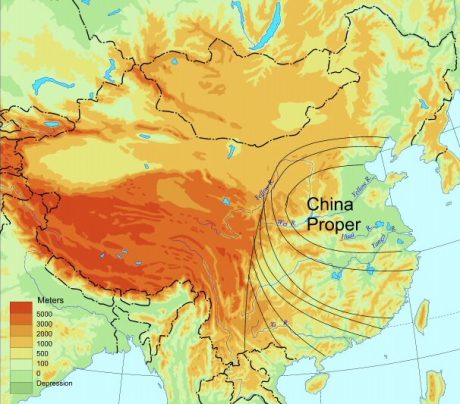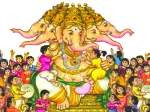Arunachal Pradesh … was part of British India in 1913-14 and formally included in India when the McMohan Line was established as the border between India and Tibet in 1938. – IANS
China has included parts of Arunachal Pradesh within its international boundaries, an updated version issued by Sky Map has revealed.
Sky Map, China’s authority on digital maps, is constructed and operated by a unit directly under Beijing”s National Surveying and Mapping Geographic Information Bureau. Recently, Sky Map users discovered that it has updated the country’s map with the latest national borders, including India’s Arunachal Pradesh, a DW media report said.
Arunachal Pradesh, a hill state in the Northeast bordering Tibet, was part of British India in 1913-14 and formally included in India when the McMohan Line was established as the border between India and Tibet in 1938.
China continues to consider Arunachal Pradesh a part of Tibet, which it occupied in 1951.
The map of China, until now, is based on the 1989 edition of the Sky Map of its national borders. Though since then, China has successively solved its border issues with Russia and Central Asian countries, but none of them have been reflected in the map.
However, as per a DW news report in Chinese, some users noticed that Sky Map has now updated the geographic information at the “county” level. “The county boundaries of some counties clearly transcend the red colour marked 1989 edition of the national border, especially in Tibet area bordering Bhutan and India,” the report said.
China has claimed its sovereignty over Tibet “counties bordering India and Bhutan from east to west — “Chayu county, Medog county of Linzhi city, Cuona county, Luoza county of Shannan city, Kangma county, Yadong county of Xigaze city”.
Chayu, Medog, and Cuona counties are divided by the McMahon Line with the northern parts in China and the southern parts in India. “Longzi County in Shannan City does not theoretically border India, but the McMahon Line runs through the county from southwest to northeast, with Chinese control in the west and Indian control in the east.”
However, China calls Indian area and part of Chayu county, Motuo county of Nyingchi city and Longzi county and Cuona county of Shannan City, “South Tibet“.
As per the updated Sky Map, “the southern boundary of Chayu county is roughly the same as the boundary in 1989, the southern part of Motuo county has contracted northward, and the southern boundary of Cuona county also roughly coincides with the boundary in 1989. The Longzi county does not border India at all, as Beijing advocates. Cuona county of Shannan city not only borders with India but also borders with Bhutan.”
“China-Bhutan border dispute area, Mulasading, is located in Cuona County-south of the McMahon Line. Mulasading originally belonged to Tibet and was managed by the Tawang Temple. In 1949, India and Bhutan signed the Permanent Peace and Friendship Agreement to transfer Mulasading to Bhutan. In the latest Sky Map, the border of Cuona County in the Mulasading region is south of the 1989 edition of the national border.”
“In addition to Tibet, the borders of Tashkurgan County in the Kashgar region of Xinjiang have also changed. The northwestern part of the border is more than the 1989 edition. According to the 2011 border agreement between China and Tajikistan, this extra part is 1,158 square kilometers east of the Sarekole Mountains,” the report said.
China occupies India”s Aksai Chin, around 37,000 sq km uninhabited high-altitude desert part of the former state of Jammu and Kashmir, bordering China”s Xinjiang province. – Outlook, 21 April 20
China’s claims on Arunachal Pradesh meaningless: Chinese scholar – PTI
In an unusual move, a Chinese strategic analyst has questioned Beijing’s “national obsession” with Arunachal Pradesh, saying that the state is only a “chicken rib” and hardly an “asset” for the country.
China claims Arunachal Pradesh as “South Tibet” and in April Beijing had announced Chinese “standardised” names for six places in retaliation to Tibetan spiritual leader Dalai Lama’s visit there.
The Chinese state media had said the move to rename the places was aimed at reaffirming China’s claim over the state.
But Union minister of state for home affairs Kiren Rijiju, who accompanies the Dalai Lama to Arunachal, had made clear that the state is “an inseparable part of India”.
The Dalai Lama’s visit to Arunachal was the seventh since he fled from Tibet through Tawang and sought refuge in India.
“Although China and India have been in a rocky relationship over the disputed territory for years, the disputed territory, which has been a national obsession, is hardly an asset to China,” Wang Tao Tao said.
“In realistic terms, the area is just a chicken rib for China,” Wang wrote on the popular Chinese website zhihu.com— which is akin to Quora—mostly covers security matters.
Interestingly, the article came at a time when India and China have been engaged in a border standoff for more than a month after Chinese troops tried to construct a road in Doklam area in the Sikkim sector. India has protested the move saying it would allow China to cut India’s access to its northeastern states.
Social media websites and blogs—like the zhihu.com—have become popular over the years in China, where millions access them on their mobile phones.
“The territorial dispute between China and India is essentially meaningless, because this disputed territory for India and China, not only difficult to development, but the moral, economic, political and management costs are extremely high,” Wang said.
“In this case, it is hard for China to actually go to war with India for these chicken ribs as long as it does not hamper security interests,” he said, suggesting that any contest over Arunachal will have adverse impact on rest of the Tibet potentially strengthen separatist forces.
“Objectively looking, the potential for separation in Tibet could become more powerful,” he said.
Wang said China has failed to fully address Tibetan identity issues.
“While the land of southern Tibet is very different from the bitter cold in northern Tibet, agriculture is relatively developed, will also virtually strengthen the ability of Tibetans to support themselves,” Wang said.
Moreover, the area is vulnerable to attacks and cannot provide superior strategic depth and security interests for China’s inland like the vast Tibetan plateau, he said. – News Nation, 4 August 2017
• Read 27 ‘Points of Dispute’ Between India and China – Anjishn Das
Filed under: china, india | Tagged: china claims arunachal pradesh, china's sky maps, chinese imperialism, mcmahon line | Comments Off on China includes Arunachal Pradesh in its updated map – IANS




























